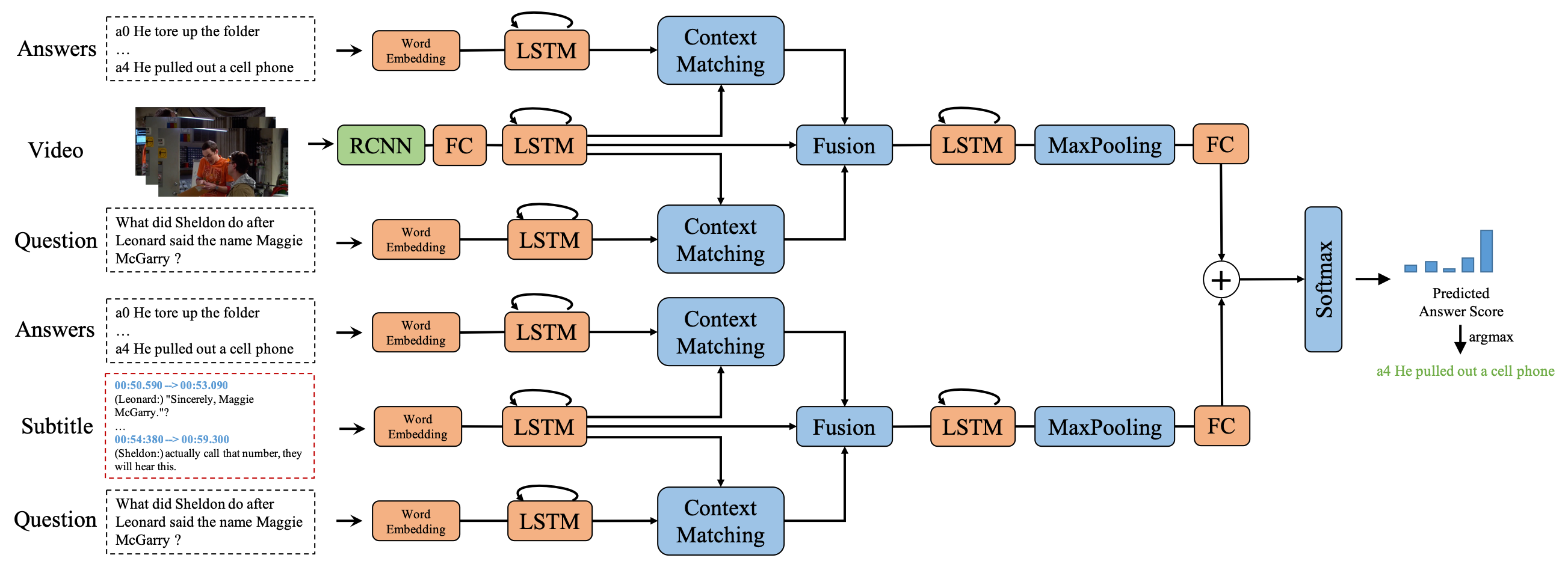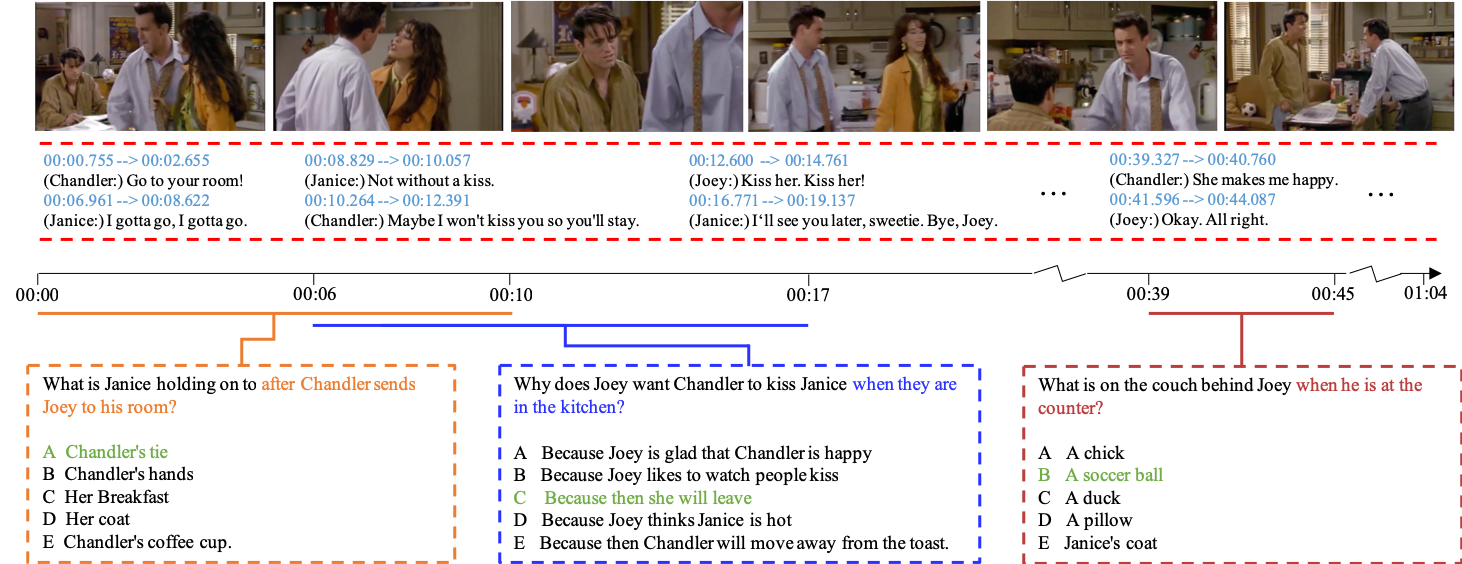PyTorch code accompanies the TVQA dataset paper, in EMNLP 2018
TVQA is a large-scale video QA dataset based on 6 popular TV shows (Friends, The Big Bang Theory, How I Met Your Mother, House M.D., Grey's Anatomy, Castle). It consists of 152.5K QA pairs from 21.8K video clips, spanning over 460 hours of video. The questions are designed to be compositional, requiring systems to jointly localize relevant moments within a clip, comprehend subtitles-based dialogue, and recognize relevant visual concepts.
-
QA example
See examples in video: click here
-
Statistics
TV Show Genre #Season #Episode #Clip #QA The Big Bang Theory sitcom 10 220 4,198 29,384 Friends sitcom 10 226 5,337 37,357 How I Met Your Mother sitcom 5 72 1,512 10,584 Grey's Anatomy medical 3 58 1,472 9,989 House M.D. medical 8 176 4,621 32,345 Castle crime 8 173 4,698 32,886 Total - 44 925 21,793 152,545
A multi-stream model, each stream process different contextual inputs.

- Python 2.7
- PyTorch 0.4.0
- tensorboardX
- pysrt
- tqdm
- h5py
- numpy
- ImageNet feature: Extracted from ResNet101, Google Drive link
- Regional Visual Feature: object-level encodings from object detector (too large to share ...)
- Visual Concepts Feature: object labels and attributes from object detector
download link. This file is included in
download.sh.
For object detector, we used Faster R-CNN trained on Visual Genome, please refer to this repo.
-
Clone this repo
git clone https://github.com/jayleicn/TVQA.git -
Download data
Questions, answers and subtitles, etc. can be directly downloaded by executing the following command:
bash download.shFor video frames and video features, please visit TVQA Dwonload Page.
-
Preprocess data
python preprocessing.pyThis step will process subtitle files and tokenize all textual sentence.
-
Build word vocabulary, extract relevant GloVe vectors
For words that do not exist in GloVe, random vectors
np.random.randn(self.embedding_dim) * 0.4are used.0.4is the standard deviation of the GloVe vectorspython tvqa_dataset.py -
Training
python main.py --input_streams sub -
Inference
python test.py --model_dir [results_dir] --mode valid
Please note this is a better version of the original implementation we used for EMNLP paper. Bascially, I rewrote some of the data preprocessing code and updated the model to the latest version of PyTorch, etc. By using this code, you should be able to get slightly higher accuracy (~1%) than our paper.
- Paper: https://arxiv.org/abs/1809.01696
- Dataset and Leaderboard: http://tvqa.cs.unc.edu/
@inproceedings{lei2018tvqa,
title={TVQA: Localized, Compositional Video Question Answering},
author={Lei, Jie and Yu, Licheng and Bansal, Mohit and Berg, Tamara L},
booktitle={EMNLP},
year={2018}
}
- Add data preprocessing scripts
- Add baseline scripts
- Add model and training scripts
- Add test scripts
- Dataset: faq-tvqa-unc [at] googlegroups.com
- Model: Jie Lei, jielei [at] cs.unc.edu
